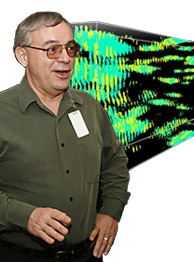
CONTACTS
|
Claim versus FactThe Truth about LANL's Role in Complex TransformationNNSA seeks to update LANL's aging infrastructure—making it smaller, safer, more agile, more secure, more efficient and thus more cost-effective, environmentally responsible, and responsive to security requirements.
The National Nuclear Security Administration (NNSA), an agency within the Department of Energy (DOE), recently proposed the transformation of several national research facilities nationwide, including Los Alamos National Laboratory (LANL). This plan—called "Complex Transformation"—seeks to update LANL's aging infrastructure, making it smaller, safer, and more agile, more secure, more efficient and thus more cost-effective, environmentally responsible, and better able to respond to changes in national security requirements. Some opponents of LANL and the Complex Transformation project are spreading falsehoods about LANL and its mission. Here are the facts: CLAIM:The Department of Energy is expanding its plutonium-pit manufacturing complex at LANL. FACT: No expansion of manufacturing operations is taking place. All pit manufacturing operations have been performed and will continue to be performed in an existing facility, known as TA-55/PF-4. The purpose of the Complex Transformation project is to streamline and reduce LANL's nuclear operations footprint by nearly 50 percent, and reduce the number of staff supporting nuclear weapons activities by 20 percent over the next decade. CLAIM: LANL will be building more new nuclear weapons and expanding the stockpile. FACT: LANL will not be expanding the stockpile or adding more weapons, but will instead build parts to maintain existing weapons. In fact, LANL actually has the lead role in continuously reducing the nation's stockpile of nuclear weapons, to its lowest levels since the 1950s. CLAIM: Pit production at LANL is slated to increase from 10 pits in 2007 to as many as 80 pits per year, and an even more extreme alternative under consideration calls for production of up to 200 pits per year. FACT: LANL will have the capacity to make as many as 80 pits per year, but actual production will be determined by needs. The option to build up to 200 pits is not what is being recommended or considered, and, in fact, that alternative was specifically eliminated from contention as a preferred option. CLAIM:CLAIM: America is telling others not to have nuclear weapons while we continue to make new ones. FACT: LANL is supporting efforts to REDUCE, not expand, the weapons stockpile and is continuously doing so. LANL will build parts to maintain existing weapons, but will not be expanding the stockpile. In fact the United States has not built a new nuclear weapon since 1989! CLAIM: At the higher level of pit production, LANL could increase airborne pollutants by 28 percent. FACT: The higher level of pit production is NOT the preferred alternative. Ordinary dust from construction may increase by up to 28 percent and is limited to that phase of activities. CLAIM: LANL's current water rights would be exceeded by 10 percent. FACT: The preferred alternative states that “LANL water use would remain within [existing] water rights.” CLAIM: In the event of a facility accident at LANL, the chances of fatalities would also increase. FACT: The preferred alternative seeks to replace a 60-year-old facility with a modern, safer, and more environmentally friendly facility that further reduces the likelihood of accidents. Complex Transformation envisions reducing LANL's nuclear operations footprint by nearly 50 percent. Moreover, a smaller, more secure, more modern and more efficient facility, with less movement of nuclear materials, will decrease the already low risk of an accident and its potential effects. |


Beep-Beep! Roadrunner!LANL is the nation's choice for the Roadrunner supercomputer—the world's most powerful computer—able to operate at sustained petaflop speeds. Roadrunner provides the computing brawn needed to tackle complex systems like climate change, flu pandemics, and nuclear reactions. Manuel Vigil, of High Performance Computing, Roadrunner project manager  |